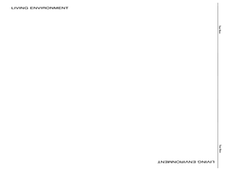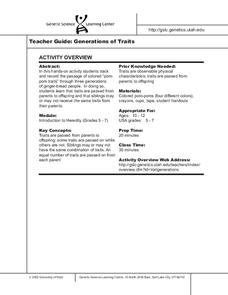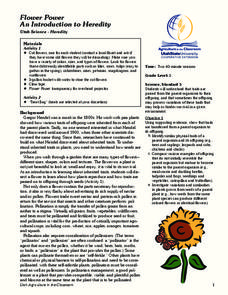Curated OER
Regents High School Examination: Living Environment 2003
The living environment, from the interior of a cell to the complex relationships among populations, are queried in this final examination. Learners look at air pollution maps, diagrams of cells, population graphs, and drawing of cells....
Curated OER
Regents High School Examination: Living Environment 2005
The 2005 version of the Regents High School Examination in the area of ecology is as comprehensive as previous years' exams. It consists of 40 multiple choice questions on everything from the structure of DNA to the interactions within...
Curated OER
Regents High School Exam: Living Environment 2008
Tne New York Regents High School Examinations are comprehensive and include various styles of questions, includingmultiple choice and the analysis of graphs. This particular version, the 2008 Living Environment exam surveys a variety of...
Curated OER
Genetics Practice: Beyond the Basics
What do you get when you cross a purple with a white? Genetics geniuses figure it out with a Punnett square. On this assignment, they must solve crosses for incomplete dominance, codominance, lethal dominance, and sex-linked genes. It is...
Curated OER
DNA, the Awesome Thread of Life
Students examine how traits are passed to offspring. In this genetic reproduction lesson plan students develop a model of dna and learn about its structure, replication and function.
Curated OER
Reproduction and Development
Have a sense of humor when discussing human anatomy with your class! Through puzzles and riddles, learners become comfortable with words relating to reproduction and development. They combine mixed up words from the "vocabulary gene...
Curated OER
A Prickle of Hedgehogs
Pupils, individually or in groups, conduct research to find information needed to complete a worksheet in which they must match an animal name with 1) the name of its offspring (dog-puppy) and 2) its animal group name (geese-gaggle.)
Curated OER
Animals and Plants: 1st Grade Science
First graders will have a better grasp on animal characteristics after viewing this presentation. The concepts covered are, skin, life cycle, offspring, size, and human/animal interrelationships. Note: This is good as a concept review or...
Curated OER
When Heredity Follows Different Rules
In this heredity worksheet, students will use a Punnett square showing the mating of a human male and female to answer 4 questions. 2 short answer questions, 2 true or false statements.
Curated OER
Generations of Traits
In this biology worksheet, students track and record the passage of colored pom pom traits through three generations of ginger-bread people. Then they describe that traits are passed from parents to offspring and that siblings may or may...
Curated OER
Genetics Review
Students complete a Punnett square and list the probability and ratio of the offspring's genotype and phenotype in this genetics worksheet. There are 8 problems to complete, and are challenging to work on.
Curated OER
Animals versus Offspring Quiz
In this animals offspring worksheet, students choose the correct baby name for the animal in the picture. Students complete 24 multiple choice questions.
Curated OER
Flower Power: An Introduction to Heredity
Young scholars observe flowers and how they grow according to heredity. In this flowers lesson plan, students observe physical traits that make flowers the offspring of other flowers, and fill out worksheets according to their findings.
Curated OER
Paint's Family Tree
Fifth graders learn about hereditary traits and family trees. In this heredity lesson, 5th graders act out a family tree skit and complete a 'trait summary' worksheet. Students then complete the 'Paint's Family Tree' worksheet. Students...
Curated OER
Cloning
In this cloning worksheet, students fill in the blank with information researched about cloning. Students draw a labeled sketch and complete statements for each step of cloning displayed in the noted text.
Curated OER
Meiosis
In this meiosis activity, student complete the blanks describing the process of meiosis. Learners draw a diagram of homologous chromosomes.
Curated OER
How Do Animal Life Cycles Vary?
In this animal life cycle worksheet, students will compare and contrast the life cycle of an alligator, insect, and bird. This worksheet is a graphic organizer.
Curated OER
How Are Traits Inherited?
In this traits worksheet, students will write in the 3 steps describing how traits are inherited. This worksheet is a graphic organizer.
Curated OER
Continuing Life
In this reproduction worksheet, students will review the genetic processes in sexual reproduction and asexual reproduction by answering 6 true or false statements. Then students will complete 2 short answer questions about the offspring...
Curated OER
What is Genetics?
In this biology worksheet, 9th graders identify which seed color is dominant in the given chart and explain why it is. Then they create a Punnett square showing the alleles of the parent plants and first generation of offspring.
Curated OER
Genetics Since Mendel
In this biology worksheet, 9th graders describe how two alleles can produce three phenotypes. Then they create a Punnett square showing the possible offspring of red and white cattle. Students also determine the genotypes and phenotype...
Curated OER
Human Genetics
In this biology activity, 9th graders create a Punnett square to show the possible offspring of a carrier female and a normal male for color blindness. Then they draw a pedigree for the family and indicate whether the daughter is...
Curated OER
Incomplete Dominance
In this biology worksheet, learners use the information given about genetics and Sponge Bob to complete each section of the sheet. They identify and explain incomplete dominance and use it to help them complete the questions that follow.
Curated OER
Animal Offspring And Animal Parent
Students investigate the concept of animals and the relationship of parents and offspring. Students are immersed in the lesson with the help of animal books and stuffed animals. These are used to stimulate exploration and conversation.

























